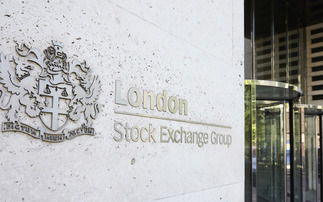In a world in which traditional asset returns are arguably becoming more correlated, it's harder to find real alternatives. Diversifiers like property and infrastructure have proven complex and costly in the past. Thankfully, some new ETFs are at hand to give you at least some access to their diversification benefits.
Lyxor launches two new infrastructure ETFs
Building better foundations
It has long been the domain of the public sector but private companies have become more important in helping countries build their infrastructure backbone. Indeed, early (albeit scant) signs are President Trump's much trumpeted $1tn spending plan on infrastructure in the US may in fact be reliant on private investors stumping up $800bn rather than by directly funding projects. Closer to home, there are now several specialist infrastructure companies in the UK.
Access to the sector has, however, been limited for small investors. Minimum investment tends to be high - from tens of thousands to millions, making it difficult to buy a diversified portfolio. It can be costly to buy and maintain these projects - stamp duty on property can add up to 15% of purchase costs. And realising cash can be time consuming and costly. The good news - recently it has become increasingly possible for investors to gain some access to the companies that lead the asset class via passive investing, in particular ETFs.
Chart Source: Lyxor/Bloomberg, FTSE Russell Data period Jan 2012 to Dec 2016. Past performance is not a reliable indicator of future results.
More: Laying the foundations for infrastructure
Listed infrastructure
During this time infrastructure has moved from being primarily an unlisted asset class to a listed one that is available to all investors. This is because the public companies that are focused on infrastructure work can be traded on exchange.
Unlike the unlisted real assets, listed infrastructure assets will trade like equities, so they have a more volatile risk profile. That's the trade-off you have to be willing to make. There are however few infrastructure ETFs available to European investors. Those that are available tend to follow global indices. Ours are different in that they focus solely on individual regions: one on the US, the other on Europe - so if you have a view on which area is likely to see greater infrastructure spending in the next few years, you can pinpoint your allocation accordingly.
Tracking FTSE's Core Infrastructure indices, our ETFs give exposure to US or European companies deriving at least 65% of their revenue from transport, telecoms or energy projects. This focus on the core infrastructure activities means they tend to be more defensive than broader infrastructure exposures, which can help reduce drawdowns at time of stress. They also tend to offer higher-than-average dividend yields, more stable revenues and cash flows, and less sensitivity to short-term economic cycles.
The methodology meanwhile helps them avoid the fault that has historically plagued many other infrastructure indices - overexposure to utilities firms. Our ETFs cap their utilities exposure at 50% of assets, ensuring a good level of diversification.
Prospects look strong as infrastructure ages in markets like the US and Germany, and it's fair to assume infrastructure assets will expand over the coming years given the spending promises made over the Atlantic and much closer to home. Gaining an exposure now could be a good idea. It can help reduce correlations, and potentially give your investment income a much needed boost. Furthermore, because infrastructure returns are often linked to inflation, the asset class can act a hedge against inflation.
Click here to view:
>>Lyxor FTSE USA Core Infrastructure Capped UCITS ETF (BUIL LN)
>>Lyxor FTSE Developed Europe Core Infrastructure Capped UCITS ETF (MAKE LN)
Real Estate Investment Trusts
While listed infrastructure ETFs are relatively new to the game, real estate investment trusts are not. REITs allow smaller investors to own a portion of a portfolio of income-producing property ventures. Like infrastructure equity, REITs can be correlated to equity markets in the short run, but in the long term their returns should provide more diversification. And investing through a passive vehicle, like an ETF, allows investors to split their investment across a variety of REITs.
US rate hikes may not, on the face of it, be good for REITs. They could however signal a stronger economy - and property markets could be long-term beneficiaries. REITs investors may enjoy capital appreciation, generate above-average income, and protect themselves against inflation.
THIS COMMUNICATION IS FOR ELIGIBLE COUNTERPARTIES OR PROFESSIONAL CLIENTS ONLY
Fund and charge data: Lyxor ETF, correct as at 17 November 2017.
This document is for the exclusive use of investors acting on their own account and categorized either as "Eligible Counterparties" or "Professional Clients" within the meaning of Markets in Financial Instruments Directive 2004/39/EC. These products comply with the UCITS Directive (2009/65/EC). Société Générale and Lyxor International Asset Management (LIAM) recommend that investors read carefully the "investment risks" section of the product's documentation (prospectus and KIID). The prospectus and KIID are available free of charge on www.lyxoretf.com, and upon request to [email protected].
The products mentioned are the object of market-making contracts, the purpose of which is to ensure the liquidity of the products on the London Stock Exchange, assuming normal market conditions and normally functioning computer systems. Units of a specific UCITS ETF managed by an asset manager and purchased on the secondary market cannot usually be sold directly back to the asset manager itself. Investors must buy and sell units on a secondary market with the assistance of an intermediary (e.g. a stockbroker) and may incur fees for doing so. In addition, investors may pay more than the current net asset value when buying units and may receive less than the current net asset value when selling them. Updated composition of the product's investment portfolio is available on www.lyxoretf.com. In addition, the indicative net asset value is published on the Reuters and Bloomberg pages of the product, and might also be mentioned on the websites of the stock exchanges where the product is listed.
Prior to investing in the product, investors should seek independent financial, tax, accounting and legal advice. It is each investor's responsibility to ascertain that it is authorised to subscribe, or invest into this product. This document is of a commercial nature and not of a regulatory nature. This material is of a commercial nature and not a regulatory nature. This document does not constitute an offer, or an invitation to make an offer, from Société Générale, Lyxor Asset Management (together with its affiliates, Lyxor AM) or any of their respective subsidiaries to purchase or sell the product referred to herein.
Lyxor International Asset Management (LIAM), société par actions simplifiée having its registered office at Tours Société Générale, 17 cours Valmy, 92800 Puteaux (France), 418 862 215 RCS Nanterre, is authorized and regulated by the Autorité des Marchés Financiers (AMF) under the UCITS Directive (2009/65/EU) and the AIFM Directive (2011/31/EU). LIAM is represented in the UK by Lyxor Asset Management UK LLP, which is authorized and regulated by the Financial Conduct Authority in the UK under Registration Number 435658. Société Générale is a French credit institution (bank) authorised by the Autorité de contrôle prudentiel et de résolution (the French Prudential Control Authority).
Lyxor International Asset Management ("LIAM") or its employees may have or maintain business relationships with companies covered in its research reports. As a result, investors should be aware that LIAM and its employees may have a conflict of interest that could affect the objectivity of this report. Investors should consider this report as only a single factor in making their investment decision. Please see appendix at the end of this report for the analyst(s) certification(s), important disclosures and disclaimers. Alternatively, visit our global research disclosure website www.lyxoretf.com/compliance.
CONFLICTS OF INTEREST This research contains the views, opinions and recommendations of Lyxor International Asset Management ("LIAM") Cross Asset and ETF research analysts and/or strategists. To the extent that this research contains trade ideas based on macro views of economic market conditions or relative value, it may differ from the fundamental Cross Asset and ETF Research opinions and recommendations contained in Cross Asset and ETF Research sector or company research reports and from the views and opinions of other departments of LIAM and its affiliates. Lyxor Cross Asset and ETF research analysts and/or strategists routinely consult with LIAM sales and portfolio management personnel regarding market information including, but not limited to, pricing, spread levels and trading activity of ETFs tracking equity, fixed income and commodity indices. Trading desks may trade, or have traded, as principal on the basis of the research analyst(s) views and reports. Lyxor has mandatory research policies and procedures that are reasonably designed to (i) ensure that purported facts in research reports are based on reliable information and (ii) to prevent improper selective or tiered dissemination of research reports. In addition, research analysts receive compensation based, in part, on the quality and accuracy of their analysis, client feedback, competitive factors and LIAM's total revenues including revenues from management fees and investment advisory fees and distribution fees.














